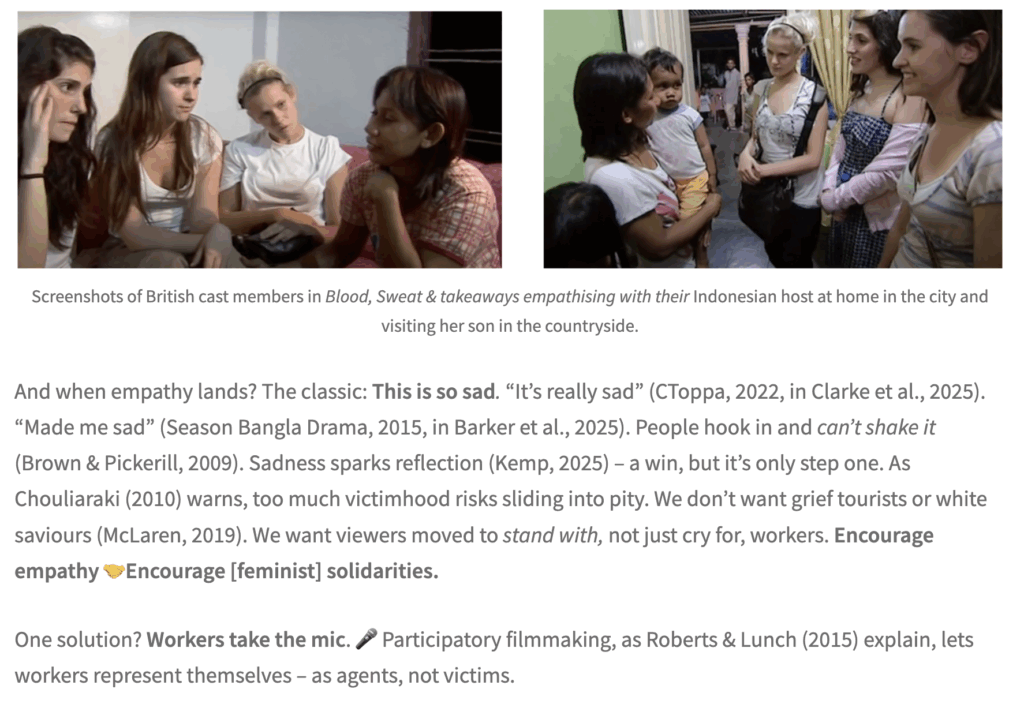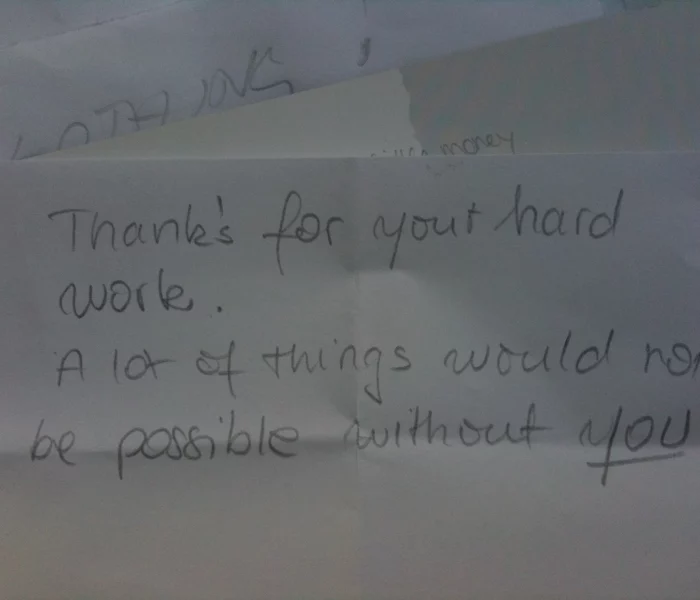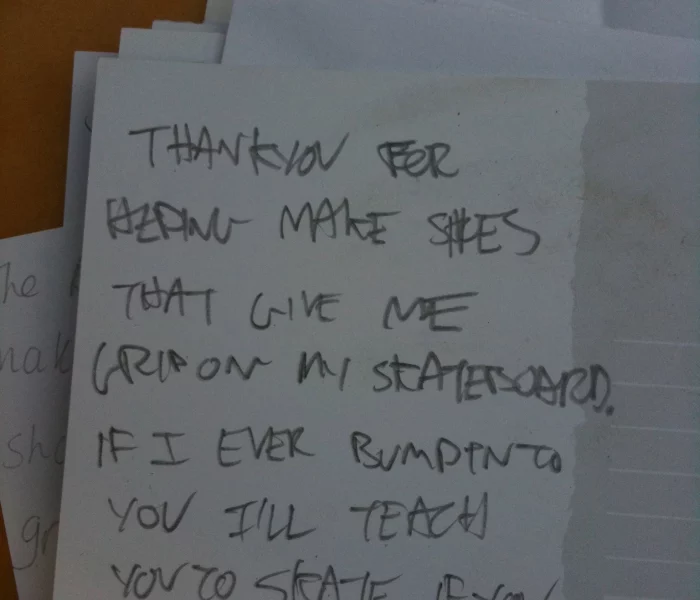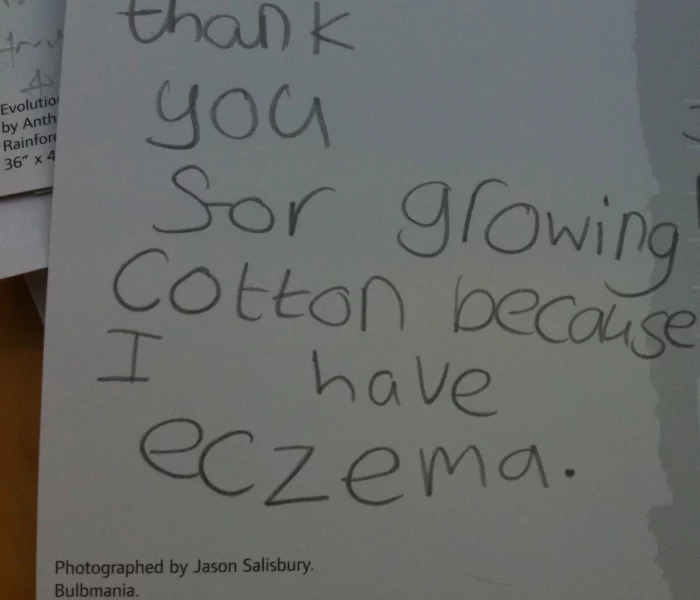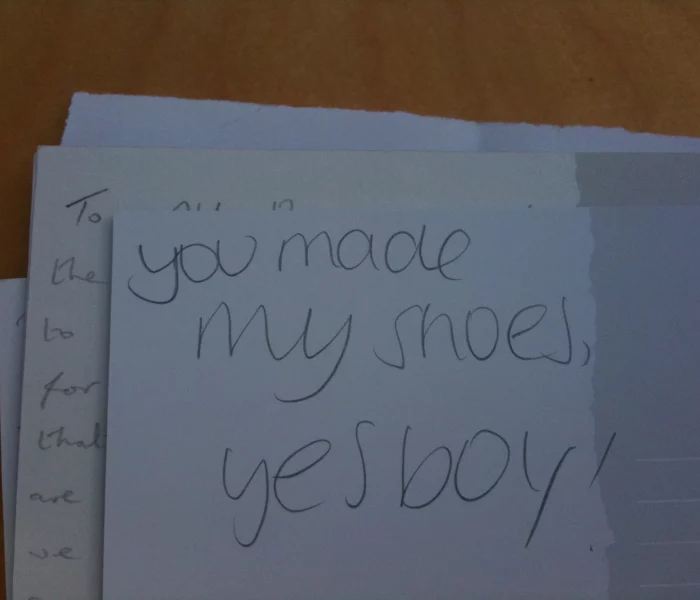Include haunting & horror
IN BRIEF
There’s the haunting presence of other people in our lives in our things, the people who made them for us, ghosts, spectres, present-absent people… whispering to us, helping us, not quite seen. And trade justice activism can hook into audiences’ grim fascinations with death, decay, disgust. Think Halloween, zombie fiction, ‘first person shooter’ video games. But might they enjoy this too much?
What’s this page?
This is a tactic page that tries to explain this tactic, illustrate it with reference to comments taken from relevant followthethings.com example pages, and gives a sense of the intentions, responses and impacts that go with it. Only a few of the handbook links work at the moment. The headings are included to give a sense of what’s to come.
This is the most basic tactic that’s used in trade justice activism. You try to create a visceral connection between the lives of consumers in your audience and those of the people who make the things they buy. You try to do this in a way that’s familiar to that audience (see Make it familiar), in this case via haunting (and sometimes horror). The spirits of supply chain workers remain in the commodities you buy. They’re with you when you use them. You can almost sense that.
Suppose you could pick things off the shelf, put them to your ear and listen to the people who had helped to get them there talking to you. What would they say and ask?
Ian Cook et al (2006, p.655).
When Rachel Louise Snyder looks at a pair of jeans, she sees faces and ghosts. She pictures Ganira Aliyev in red socks and ankle-high galoshes picking cotton in Azerbaijan. She recalls Cambodian Ry Muong, whose right hand has no fingers apart from her thumb, sewing belt loops onto jeans six days a week… It’s hard to tell who’s more haunted — the factory worker or Snyder.
Comment on Rachel Louise Snyder’s book ‘Fugitive Denim‘.
As a concept, haunting is easy to imagine. And there can be an enjoyment in that spooky feeling. While some may be frightened away from the issues you want to address, including haunting and horror can encourage engagement with trade justice activism’s shocking and distressing content (see Show capitalist evils).
That dilemma is our simultaneous need to exploit the natural world and preserve it. The dilemma becomes all the more complicated, as Burtynsky’s pictures attest, because that exploitation can lend itself to magnificence as well as horror.
Comment on ‘Manufactured Landscapes‘.
Ultimately, it is the spectres of corruption, racism and unchecked capitalism which haunt this deeply felt film.
It seemed so important to shoot [this film] in Morecambe Bay, which is this mix of the immensely beautiful and frightening.
Comments on ‘Ghosts‘.
Our favourite academic work on this topic is by the political scientist Timothy Luke. He brings together the theoretical writing about commodity fetishism from Karl Marx (see Humanise things) and about cyborg ontology from Donna Haraway (see Find lost relations) around the concept of ‘hauntology’.
Things in the capitalist mode of production possess spirits of someone other than those who use them, and, in turn, these things transfer those properties, share those energies, disclose an older intelligence to new users, possessing them with their spell.
Timothy Luke (2000, p.49).
This tactic is most directly applied by trade justice activists when there are supply chain horrors to report, like workers’ deaths in factory fires and collapses (like the Rana Plaza collapse, see The eternal embrace) or in drownings (see Ghosts).
We need to develop forms of critique that inspire hauntings, feed feelings, come alive, leap out and grab us, … that are not just about vital materiality, but are themselves vitally material.
Ian Cook & Tara Woodyer (2012, p.240).
This tactic is also used in commodity-centred activism, where a commodity is re-presented by activists as haunted by the lives and struggles of the people who made it (see ‘Re-design the commodity‘: Cook & Woodyer 2012): often speaking to their consumers through writing on their labels (see Cries for help found in Primark clothes), letters in their pockets and packaging (see ‘I found this in a box of Halloween decorations‘): both ‘Message in a bottle‘ actvism), and voices that shoppers can listen to (see ‘Exchange values: images of invisible lives’: Cook et al 2006).
Sometimes this actvism can be touching, some kind of physical connection being make betrween the bodies of consumers and supply chain workers (see ‘Phone Story’, ‘Jamelia: whose hair is it anyway?‘, ‘Those with justice‘).
The english schoolgirls though, who said they didn’t really care if the hair came from dead people – ewww! I’d rather I knew it came from someone alive :/
Creeperific.
Comments on ‘Jamelia: whose hair is it anyway?‘
And sometimes trade justice activism can be focused on the people who make seasonal commodities with haunted and horrific content (see ‘I found this in a box of Halloween decorations‘, ‘Those with justice‘). ‘Creeperific‘ is a good word, a jaunty combo of creepy and terrific, for audiences who might be drawn into trade justice activism by the promise of discomfort.
To finish, however, there’s some sobering writing on TV documentaries and news that shows human suffering that more critically discusses audiences’ enjoyment of the beauty and emotions of horror and disaster (see Dant 2012). The composition of a photograph of two seemingly-embracing factory workers crushed to death in the Rana Plaza factory complex collapse vividly raises this problem:
Thank you … for sharing such an amazing photo. Its beautiful!!! emotionally filled photo, I cried reflecting on a mans love.
Is it horrible to say that I find this beautiful?
Comments on ‘The eternal embrace‘
Therefore, just as much as this tactic can draw people in to trade justice activism, what does it risk in terms of the kind of poverty- or disaster- porn that audience could expect to follow on from horror framings, which critics of this work continually bring up (see the responses ‘So beautiful’, ‘Creeperific’, ‘LOL capitalism’, ‘This activism is exploitative’)?
RECOMMENDED READINGS
Ian Cook et al (2006) Geographies of food: following.Progress in human geography 30(5), p.655-666
Ian Cook & Tara Woodyer (2012) Lives of things. in Eric Sheppard, Trevor Barnes & Jamie Peck (eds) The Wiley Blackwell companion to economic geography. Oxford: Wiley-Blackwell, p.226-241
Tim Dant (2012) Mediating morality. in his Television and the moral imaginary. Basingstoke: Palgrave MacMillan, p.147-178
Alex Lockwood (2016) Graphs of grief and other green feelings: the uses of affect in the study of environmental communication. Environmental communication 10(6), p.734-748
Timothy Luke (2000) Cyborg enchantments: commodity fetishism & human / machine interactions. Strategies 13(1), p.39-62
Esther Pereen (2014) The spectral metaphor: living ghosts & the agency of invisibility. Basingstoke: Palgrave MacMillan
Image credit
Icon: Imaginary friends (https://thenounproject.com/icon/imaginary-friends-28558/) by TNS from Noun Project (CC BY 3.0)
BACK TO HANDBOOK CONTENTS PAGE 👉
SECTION: Tactics
by Ian Cook (September 2025)




